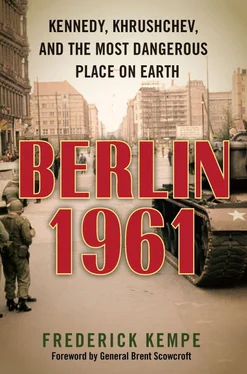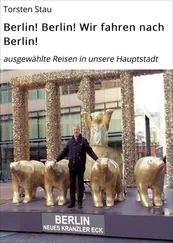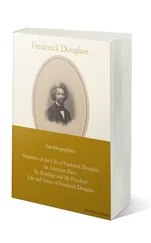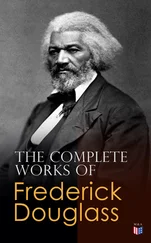Armed with only umbrellas and hooded jackets against the drizzle, the crowd pushed forward to find the best vantage points toward the front of Friedrichstrasse, Mauerstrasse, and Zimmerstrasse, the three streets whose junction was Berlin’s primary East–West crossing point for Allied military and civilian vehicles and pedestrians. Some of them stood on rooftops. Others, including a gaggle of news photographers and reporters, leaned out of windows from low-rise buildings still shell-pocked from wartime bombings.
Reporting from the scene, CBS News reporter Daniel Schorr, with all the drama of his authoritative baritone, declared to his radio listeners, “The Cold War took on a new dimension tonight when American and Russian fighting men stood arrayed against each other for the first time in history. Until now, the East–West conflict had been waged through proxies—German and other. But tonight, the superpowers confronted each other in the form of ten low-slung Russian tanks facing American Patton tanks, less than a hundred yards apart….”
The situation was sufficiently tense that when an American army helicopter flew low overhead to survey the battleground, an East German policeman barked in panic, “Get down!” and an obedient crowd dived facedown on the ground. At other moments an odd calm reigned. “The scene is weird, almost incredible,” said Schorr. “The American GIs stand by their tanks, eating from mess kits, while West Berliners gape from behind a rope barrier and buy pretzel sticks, the scene lit by floodlights from the eastern side while the Soviet tanks are almost invisible in the dark of the East.”
Rumors swirled through the crowd that war was upon Berlin. Es geht los um drei Uhr (“It will begin at three in the morning”). A West Berlin radio station reported that retired General Lucius Clay, President Kennedy’s new special representative in Berlin, was swaggering toward the border Hollywood-style to direct the first shots personally. Another story spread that the U.S. military police commander at Checkpoint Charlie had slugged an East German counterpart, and that both sides were aching for a gunfight. Still another account had it that entire Soviet companies were marching toward Berlin to end the city’s freedom once and for all. Berliners as a breed were drawn to gossip even in the worst of times. Given that most of those in the crowd had experienced one if not two world wars, they reckoned just about anything could happen.
Clay, who had commanded the 1948 airlift that had rescued West Berlin from a three-hundred-day Soviet blockade, had set the current confrontation in motion himself a week earlier over an issue most of his superiors in Washington did not consider a war-fighting matter. Breaking with established four-power procedures, East German border police had begun to demand that Allied civilians present their identity cards before driving into the Soviet zone of Berlin. Previously, their vehicles’ distinctive license plates had been sufficient.
Convinced from personal experience that the Soviets would whittle away at the West’s rights like soft salami unless they were confronted on the smallest of matters, Clay had refused, and ordered armed escorts to muscle the civilian vehicles through. Soldiers carrying bayoneted rifles and backed by American tanks had flanked the vehicles as they wound their way through the checkpoint’s low, zigzag, red-and-white-striped concrete barriers.
At first, Clay’s tough approach was vindicated: the East German border guards backed down. Swiftly, however, Khrushchev ordered his troops to match U.S. firepower tank for tank and to be prepared to escalate further if necessary. In a curious and ultimately unsuccessful effort to preserve deniability, Khrushchev ordered that the Soviet tanks’ national markings be obscured and that their drivers wear unmarked black uniforms.
When the Soviet tanks rolled up to Checkpoint Charlie that afternoon to halt Clay’s operation, they transformed a low-level border contest with the East Germans into a war of nerves between the world’s two most powerful countries. U.S. and Soviet commanders operating out of emergency operation centers on opposite sides of Berlin weighed their next moves as they anxiously awaited orders from President John F. Kennedy and Premier Nikita Khrushchev.
While leaders deliberated in Washington and Moscow, the American tank crews, commanded by Major Thomas Tyree, nervously sized up their opponents across the world’s most famous East–West divide. In a dramatic nighttime operation on August 13, 1961, just two and a half months earlier, East German troops and police with Soviet backing had thrown up the first, temporary barriers of barbed wire and guard posts around West Berlin’s 110-mile circumference in order to contain an exodus of refugees whose flight had threatened the continued existence of the communist state.
Since then, the communists had fortified the borderline with concrete blocks, mortar, tank traps, guard towers, and attack dogs. What the world was coming to know as “the Berlin Wall” was described by Mutual Broadcasting Network’s Berlin correspondent Norman Gelb as “the most remarkable, the most presumptuous urban redevelopment scheme of all time…that snaked through the city like the backdrop to a nightmare.” Journalists, news photographers, political leaders, spy chiefs, generals, and tourists alike swarmed to Berlin to watch Winston Churchill’s figurative Iron Curtain assume a physical form.
What was clear to them all was that the tank showdown at Checkpoint Charlie was no exercise. Tyree had seen to it that his men had loaded their tanks’ cannon racks that morning with live ammunition. Their machine guns were at half-load. Beyond that, Tyree’s men had mounted several of their tanks with bulldozer shovels. During exercises in preparation for just such a moment, he had trained his men to execute a plan to drive into East Berlin peacefully through Checkpoint Charlie, which was permitted under four-power rights, then crash through the rising Berlin Wall upon their return—daring the communists to respond.
To produce warmth and steady their nerves, the U.S. tank drivers gunned their engines to a terrifying roar. However, the small Allied contingent of 12,000 troops, only 6,500 of whom were Americans, would stand no chance in a conventional conflict against the 350,000 or so Soviet soldiers who were within striking distance of Berlin. Tyree’s men knew they were little more than a trip wire for an all-out war that could go nuclear faster than you could say Auf Wiedersehen .
Reuters correspondent Adam Kellett-Long, who had rushed to Checkpoint Charlie to file the first report on the showdown, worried as he monitored an anxious African American soldier manning the machine gun atop one of the tanks. “If his hand shook any harder, I feared his gun would go off and he would have started World War III,” Kellett-Long thought to himself.
At about midnight in Berlin, or 6:00 p.m. in Washington, Kennedy’s top national security advisers were meeting in emergency session in the White House Cabinet Room. The president was growing increasingly nervous that matters were getting out of control. Just that week, Kennedy’s nuclear strategists had finalized detailed contingency plans to execute a nuclear first-strike on the Soviet Union, if necessary, which would leave America’s adversary devastated and its military unable to respond. The president still had not signed off on the plans and had been peppering his experts with skeptical questions. But the doomsday scenarios colored the president’s mood as he sat with National Security Advisor McGeorge Bundy, Secretary of State Dean Rusk, Secretary of Defense Robert McNamara, Chairman of the Joint Chiefs of Staff General Lyman Lemnitzer, and other key U.S. officials.
Читать дальше











